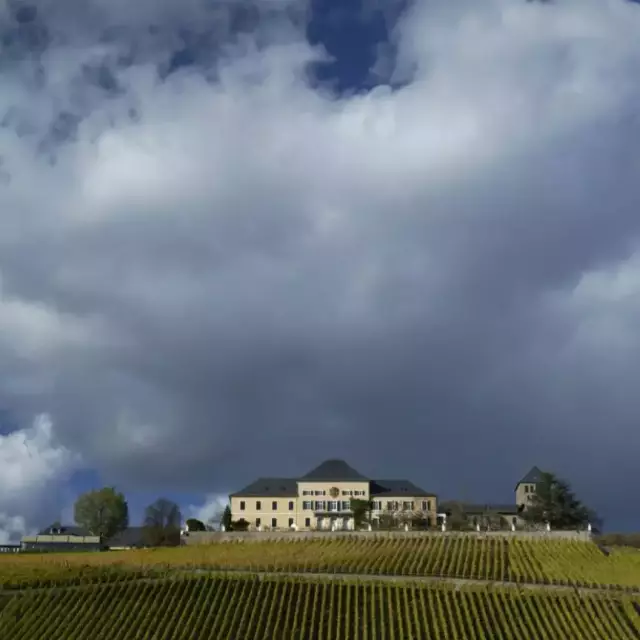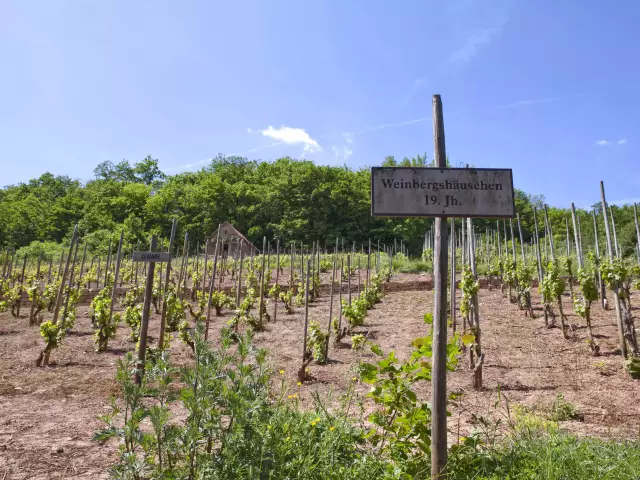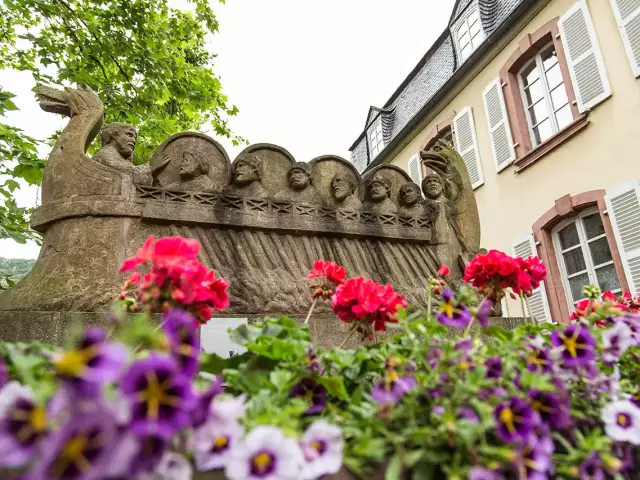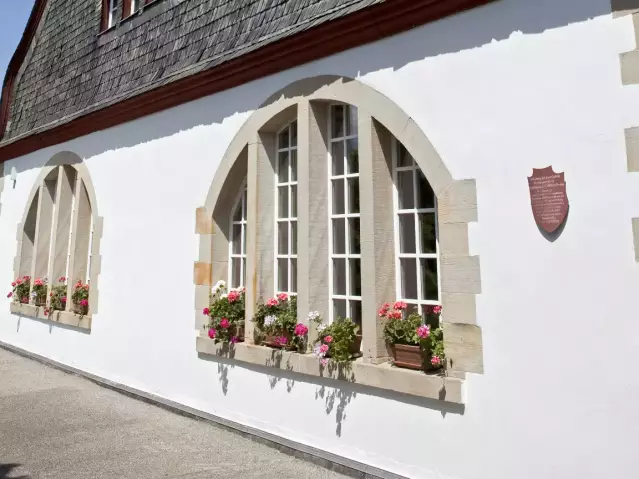Schloss Johannisberg

This is legendary ground. It is where the famed rider was heading in 1775, with a delayed message from the Prince-Abbot to begin what was by then a Spätlese - late harvest of the grapes surrounding Schloss Johannisberg. This fateful delay gave birth to a prized delicacy.
This is where the legend began in 1775. The famed rider, depicted in the monument near the vinotheque, was delivering the official authorization for the start of harvest from the prince bishop in Fulda, who then owned the estate and gave an annual blessing. For reasons unknown till this day, the messenger was delayed for a couple of weeks. When he finally reached Johannisberg, the grapes in the vineyards were shrivelled on the vine and covered in noble rot, which was until then unknown to the wine makers. Nevertheless, the courageous winemaker of the estate had the grapes brought in and pressed. He was soon shocked to find that the 'rotten' harvest had actually produced a wine of unsurpassed quality. This fateful delay gave birth to a prized delicacy, Spätlese and late harvest wines, proving the adage that 'good things come to those who wait'.
Since 817, grapes have been cultivated on these slopes, and for the last 300 years almost exclusively Riesling. The estate of Schloss Johannisberg is thus a monument for establishing Riesling as the dominant German wine grape. A dictionary of viticulture, stemming from 1930, notes succinctly under the entry of Riesling : "Native country: Germany. Probably a variety from the Rheingau." In any case, one fact holds true: Schloss Johannisberg is a treasure chamber for Riesling wines and the art of wine making.
Legend says that the vineyards themselves were planted according to the orders of Charlemagne. From his royal palace in Ingelheim, on the western side of the Rhine in the region of Rheinhessen, he looked across the river and noticed that the snow melted there first, on the Johannisberg. That may well be possible, since the vineyard site along the Elsterbach is first noted in a historic document in 817 – the time of Charlemagne. Around 1100, monks from the Benedictine abbey of Saint Alban in Mainz founded a new cloister on this spot – exactly on the 50th latitude. Around the year 1130, they built a basilica. The new monastery was dedicated to Saint John, and its properties called Johannisberg (Saint John's mountain).
From 1716, the estate belonged to the prince bishop of Fulda who built the huge castle with its three wings. Four years later, 294 000 Riesling grapevines were planted in the estate's vineyards, triggering a viticultural explosion as winemaker Odo Staab noted: "In all of the Rheingau, no other grape variety for the making of wine is to be planted except the Rüßling." This was also the birth of the "Johannisberger" which became the very synonym for high quality wines in the centuries to come. Still today in the US, "Johannisberg Riesling" is the equivalent for Riesling wines in general.
In 1816, the Austrian Emperor who then owned the estate, gifted it to his famous foreign minister Clemens Fürst von Metternich. The Metternich family are still the current owners and continue to pay the wine tithe to Austria. The 35 hectares of vineyards are still stocked exclusively with Riesling grapes while the 'Bibliotheca subterranea', the famous treasury in the cellars underneath, still holds specially rare vintages dating back to 1848.
The late harvest of grapes with noble rot that started on the Johannisberg in the Rheingau, has since that fateful delay, been considered a feature not a flaw, and has won the hearts and glasses of wine afficionados the world over.




